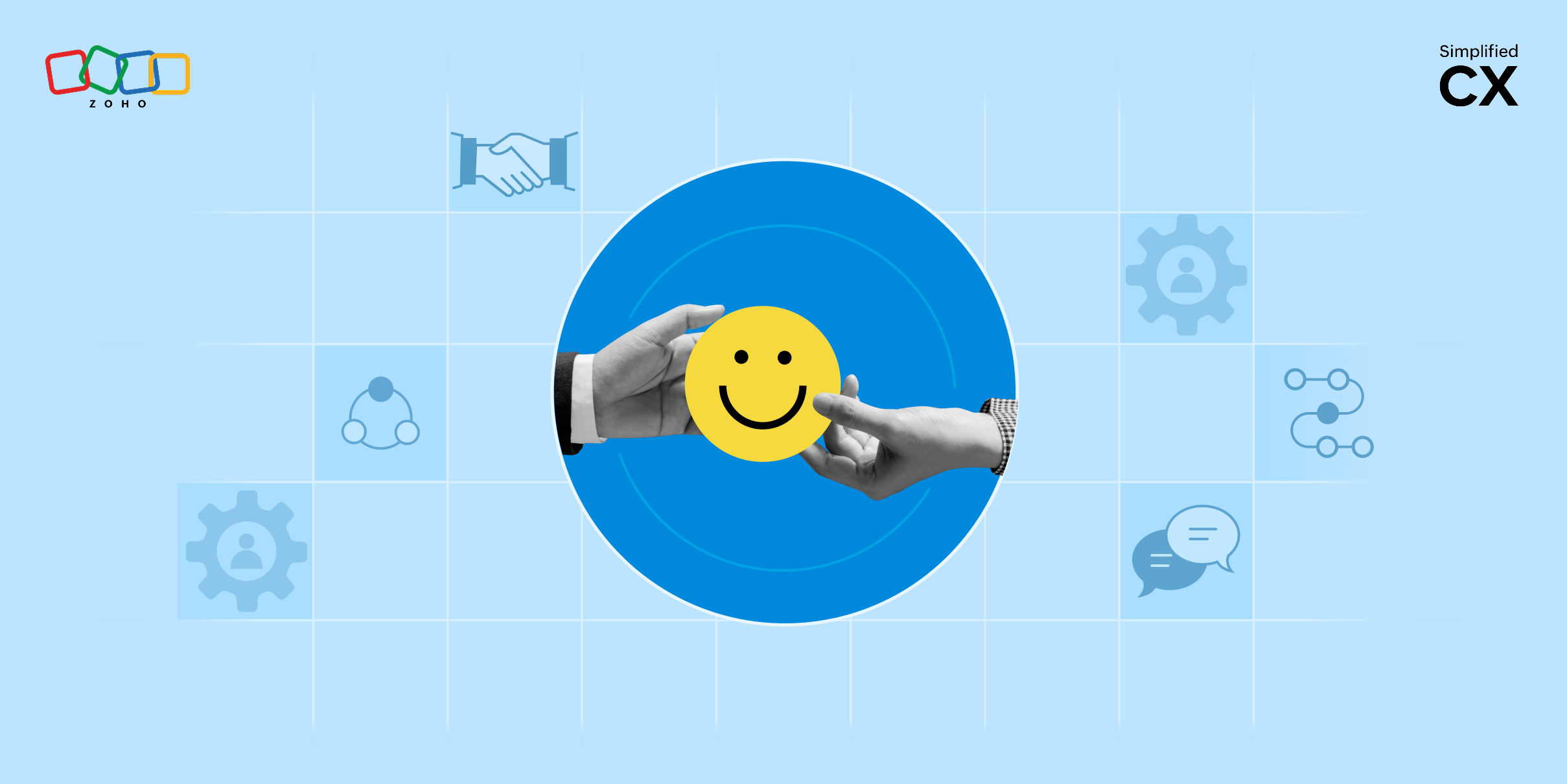A quick guide to building a loyalty program
- Last Updated : September 27, 2025
- 49 Views
- 5 Min Read
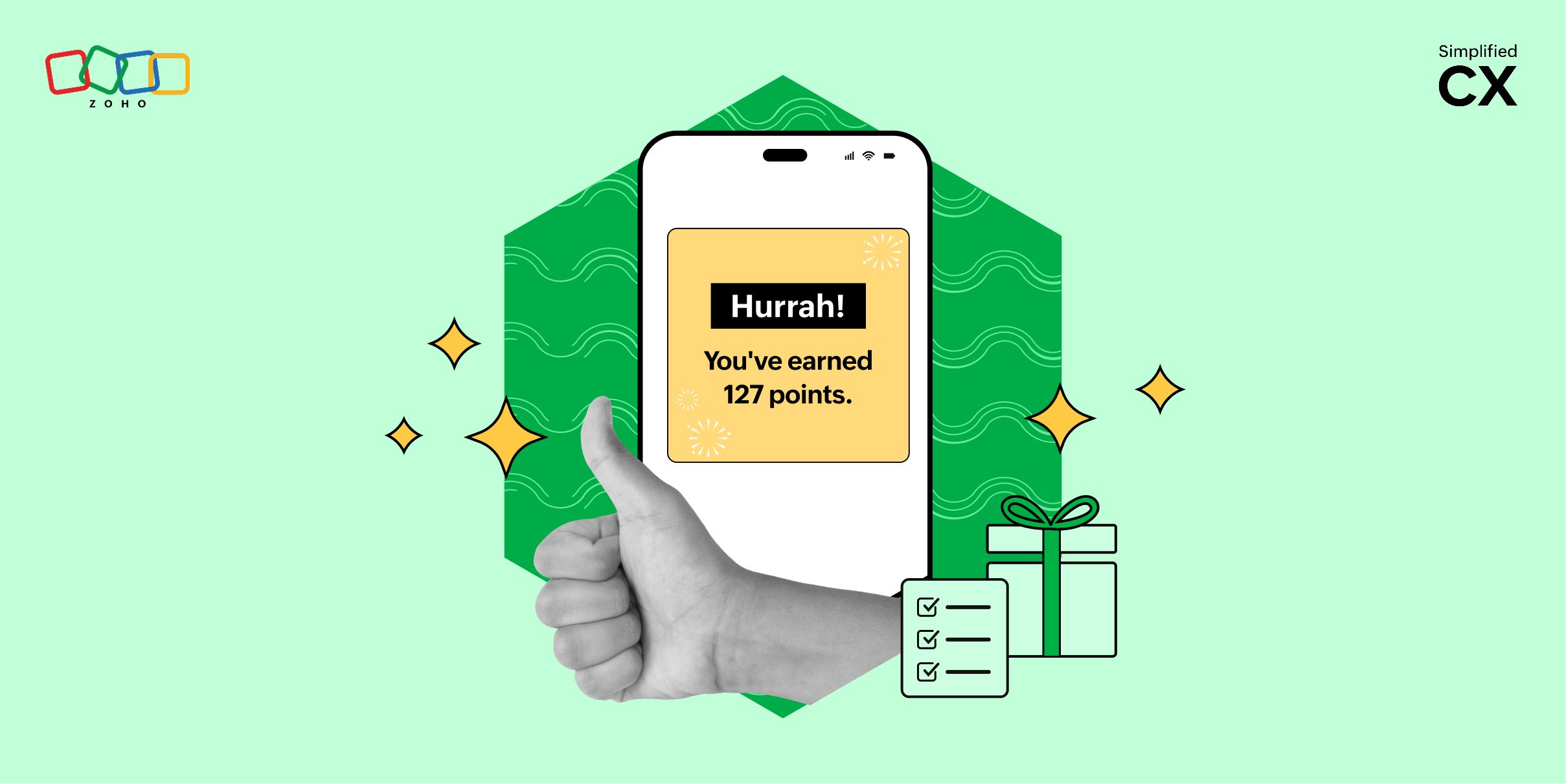
It's a well-known fact that loyalty and advocacy are the last two stages in the customer lifecycle. Loyalty is where your customers stick to your brand/business for their needs, and advocacy is where they recommend you to others. While it's fairly challenging to get customers to talk about you (positively, of course!), it's comparatively easy to make customers stick to your brand. The best and most organic way to do that is by providing top-quality products or services and equally stellar customer support. You do that, and your customers will, more often than not, keep coming back to you. However, that doesn't mean that you can't explore other ways to retain customers—the most straightforward one being a loyalty program.
Because competition is severe and customers have various options to choose from, businesses have to be on their toes constantly both to acquire new customers and retain old ones. By incentivizing customers to keep the relationship going, loyalty programs help achieve the goal of customer retention. It's 2025, and most retail businesses and services, irrespective of size, have some sort of loyalty program in place. If your business doesn't have one yet, it's high time that you created one. And that's exactly what we'll help you with in this article.
Think mobile first
The easiest way to stay connected and engaged with customers today is via their smartphones. So before you get started with your loyalty program, look at the feasibility of creating a mobile app for your business. You can very well run a loyalty program of sorts without an app, but its scope will be limited and your customers won't be able to keep track of their points and rewards easily. In contrast, a mobile app provides a whole host of benefits in terms of convenience (for customers) and engagement (for brands) and meets consumers' growing preference for accessing loyalty programs through mobile apps. In fact, a study reveals that 59% of customers—across generations—prefer to access loyalty programs through mobile apps. Given that the bulk of the current and next generation of customers are more tech-savvy than previous ones, it's only safe to assume that this number will go up in the future. Therefore, act today so that you can cater to this need of your customers too.
Give points for all purchases
Since the goal of loyalty programs is to incentivize customers to keep doing business with you, be reasonably generous with the reward points you give for each purchase. Give enough points that your customers feel happy about the reward they receive, but limit the redemption policy so that it doesn't affect your business negatively or make the program unsustainable.
For instance, a supermarket in my locality offers 10 points for every ₹1,000 (USD $11) that a customer spends, and has a minimum limit of 300 points for redemption. Customers can redeem their points in monetary value; that is, if someone has accumulated 540 points, they can buy items worth ₹540 without paying anything. The catch is that this applies only to stationery and kitchen products, which still isn't a bad deal at all. Ten points for ₹1,000 might seem too little, but customers, on average, spend at least ₹5,000 to ₹6,000 every month at the supermarket, which means they can accumulate the minimum limit of 300 points within four or five months and redeem them soon enough.
Identify the sweet spot that works for your business and you'll have a win-win situation for both you and your customers.
Provide special offers on important dates
This is a sure-shot way to make customers feel special on days that matter to them. Many establishments offer birthday and anniversary discounts when customers mention them, but a dedicated loyalty program helps you keep track of these important dates and offer rewards and discounts proactively.
The Starbucks Rewards program is a good example of this. As part of this program, customers are eligible to receive a free drink of their choice on their birthday, provided they've spent a certain amount of money at Starbucks that year.
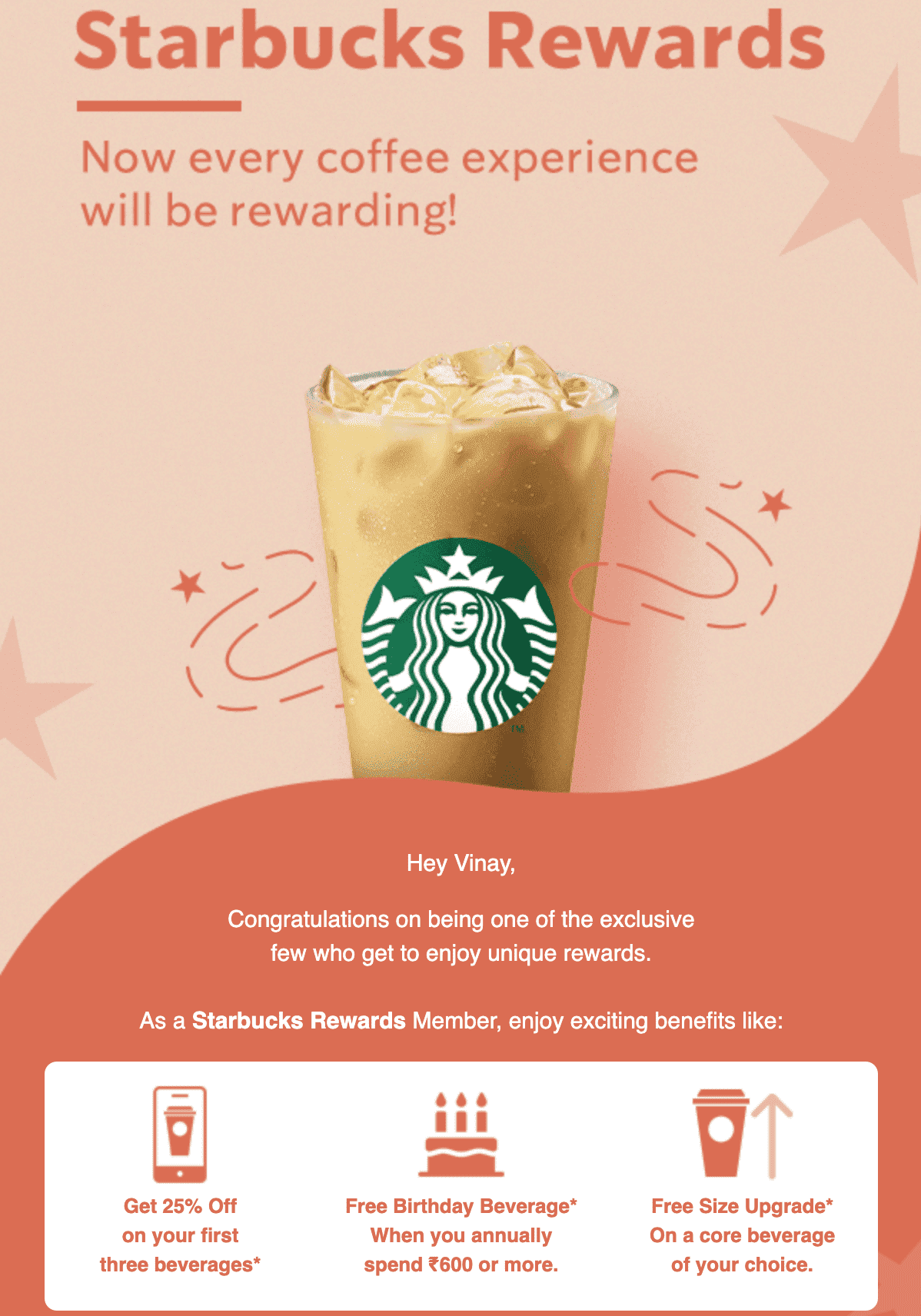
Again, if you have a mobile app, you can add more value by sending push notifications to customers ahead of the special date and remind them about the reward. If you look at the example of Starbucks, notifying customers beforehand leaves a positive impression on their minds and also helps them plan their day in such a way that they make a stop at a Starbucks.
You're definitely going to come up with special offers and discounts during holidays, but having one for birthdays and anniversaries makes individual customers feel special by adding a personal touch. And that brings us to the next point.
Personalize and provide the flexibility to choose rewards
What do customers like more than exclusive rewards on special dates? Relevant and personalized rewards throughout the year. A study states that a whopping 93% of customers across the world "have used or would use features allowing them to customize how they earn rewards and/or choose their rewards."
As a first step, create customer segments and offer a pool of rewards that suits the demographics and region of each segment. Collect first-party data to find out the kind of rewards your customers expect to see and the frequency with which they'd like to receive relevant communications—and then tailor your program accordingly. Personalized CX, as this McKinsey report states, provides a major boost to customer loyalty, and taking it up a notch by applying it to your loyalty program is a way to improve it further.
Let customers access their redemption history
This is one of the most important expectations customers have of a loyalty program, especially one that's powered by a mobile app. Customers expect and appreciate transparency when it comes to information on how many reward points they've accumulated during each purchase as well as within a certain time range, like the current year or the last three months. Similarly, if your points have an expiration period, it's essential that you notify customers beforehand. With easy access to such information, your customers can see for themselves how effectively they're using your loyalty program and how they can make the best out of it.
A great example of this is Shell's much-beloved mobile app-powered loyalty program, which is comprehensive in its scope and effective in its intent.
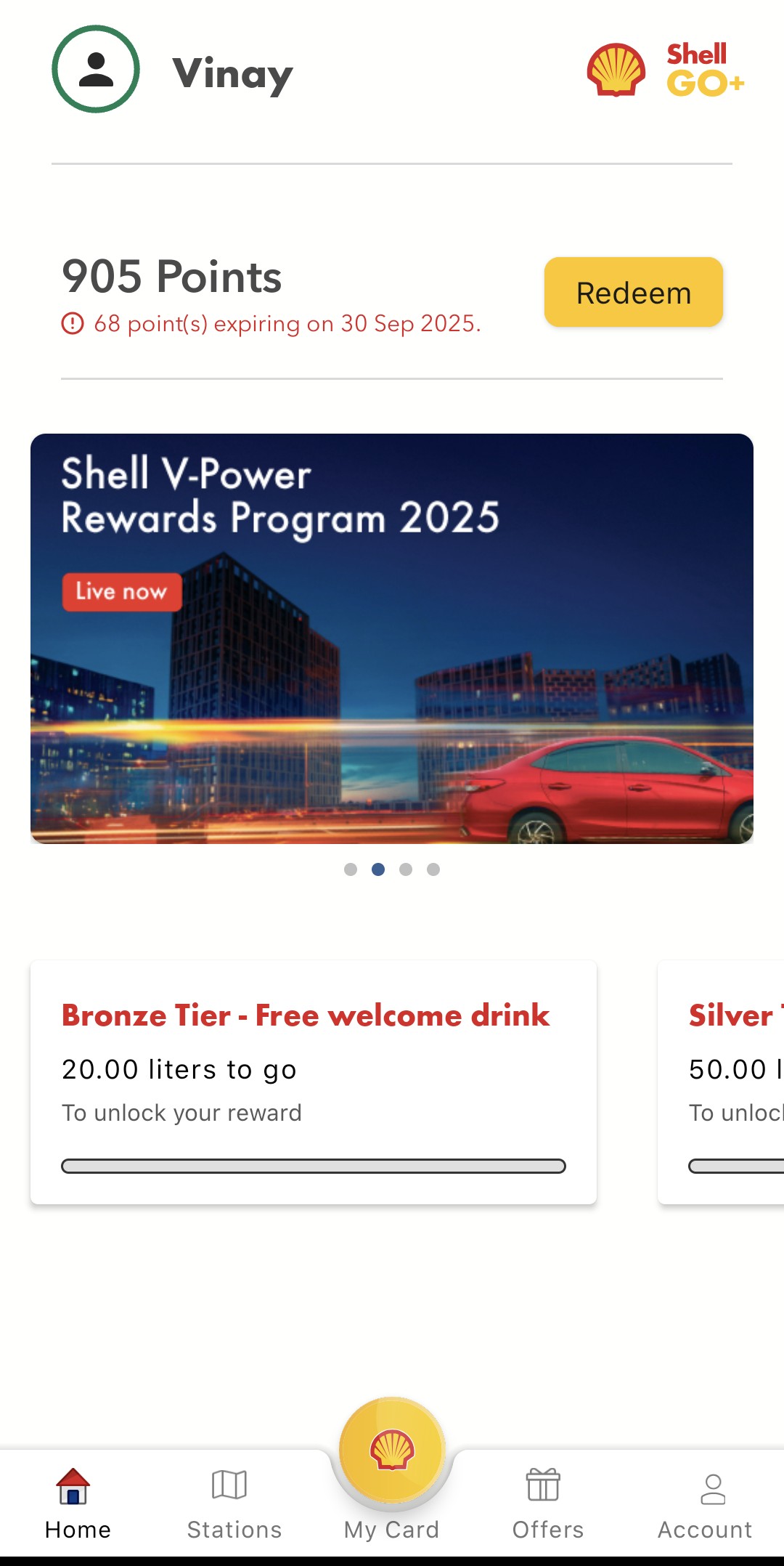
For instance, the app's home screen, shown above, prominently displays the number of points expiring in the coming days. Essential information? Check. Draw customer's attention to it and motivate action? Check.
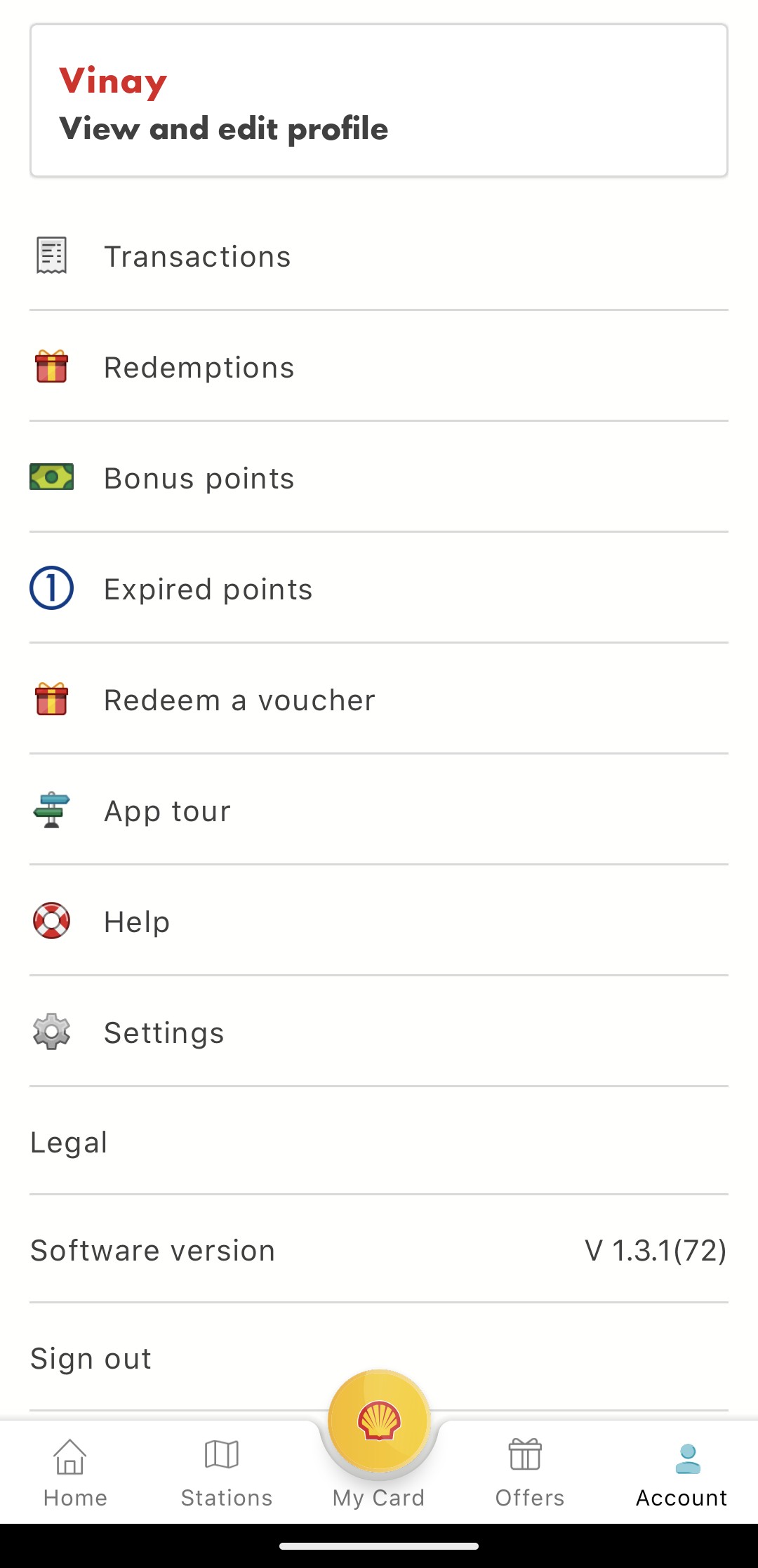
And the account screen, shown above, lets customer access all the information they need without making them jump through hoops.
It's evident that well-planned and well-executed loyalty programs leave a positive impact on customers' minds. Much like all positive CX initiatives, the time to create a loyalty program for your business was yesterday, but it's still okay if you start today and reward your customers for sticking with you.


